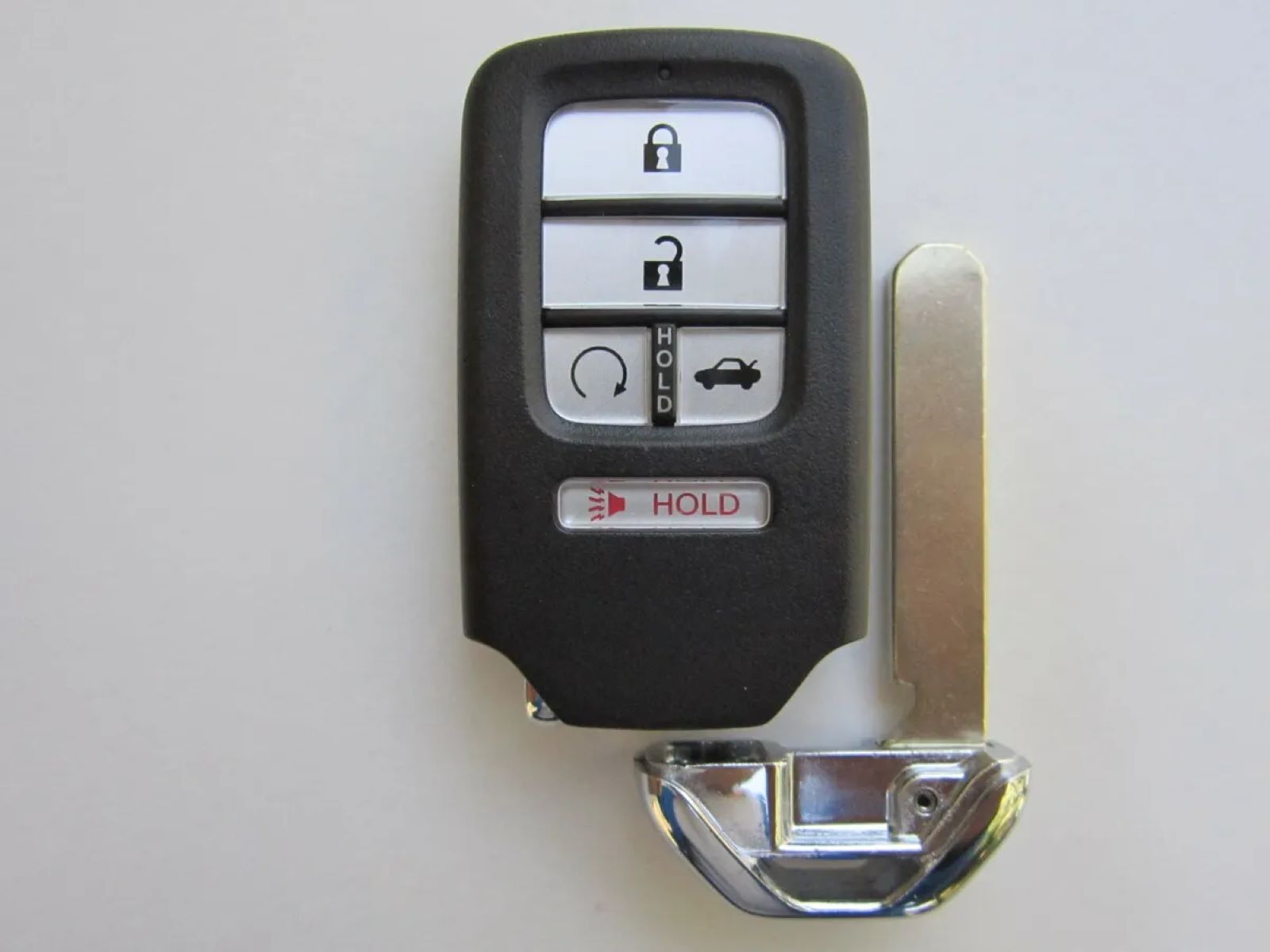Signs of a Failing Key Fob Battery
Signs of a Failing Key Fob Battery
As a responsible Honda owner, it’s crucial to recognize the signs of a failing key fob battery to avoid any inconvenience. Here are the common indicators that may signal a depleted key fob battery:
- Intermittent Response: When you press the buttons on your key fob, the vehicle may not respond consistently, indicating a potential battery issue.
- Weakened Signal Strength: If you find yourself needing to be in close proximity to your vehicle for the key fob to work, it could be a sign of a weakening battery.
- LED Indicator Dimming: Many key fobs have a small light that illuminates when a button is pressed. If this light appears dim or fails to light up, it may indicate a low battery.
- Unresponsive Buttons: When the buttons on your key fob become unresponsive or require multiple presses to function, it’s a strong indication that the battery may need replacement.
- Vehicle Not Starting: In some cases, a severely depleted key fob battery can lead to difficulty starting the vehicle, as the fob is unable to communicate with the car’s security system.
These signs serve as crucial warnings that the key fob battery is reaching the end of its lifespan. By promptly addressing these indicators, you can avoid being locked out of your vehicle or facing other inconveniences associated with a depleted key fob battery.
Checking the Key Fob Battery
Ensuring the proper functioning of your Honda’s key fob is essential for seamless vehicle access and security. To determine if the key fob battery is the culprit behind any operational issues, follow these simple steps to check its status:
- Observe Button Response: Press each button on the key fob and take note of the responsiveness. If you notice delayed or inconsistent reactions, it could indicate a weakening battery.
- LED Indicator: Pay attention to the key fob’s LED indicator, typically located near the top of the fob. When you press a button, the light should illuminate brightly. A dim or non-existent light suggests a low battery.
- Proximity Test: Test the key fob’s range by attempting to unlock or lock your Honda from varying distances. A diminished range compared to its typical functionality may signal a battery issue.
- Diagnostic Tools: Some key fobs come with built-in diagnostic features that allow you to check the battery status. Refer to your owner’s manual for specific instructions on utilizing these tools.
Regularly performing these checks can help you stay ahead of potential key fob battery issues and address them before they escalate into more significant problems. By maintaining a proactive approach, you can ensure that your key fob operates reliably, providing you with the convenience and security you depend on.
How to Replace the Key Fob Battery
When it comes to maintaining your Honda’s key fob, knowing how to replace the battery is a valuable skill that can save you time and money. Follow these simple steps to replace the key fob battery with ease:
- Gather the Necessary Tools: Before starting the replacement process, ensure you have a small screwdriver or a tool suitable for prying open the key fob’s casing.
- Access the Battery Compartment: Most key fobs have a designated slot for battery replacement. Use the screwdriver or prying tool to carefully open the fob’s casing and access the battery compartment.
- Remove the Old Battery: Once the battery compartment is accessible, gently remove the old battery, taking note of its orientation within the fob.
- Insert the New Battery: Place the new battery into the designated slot, ensuring it aligns with the correct polarity as indicated in the fob’s interior.
- Close the Casing: Carefully reattach the key fob’s casing, ensuring that it snaps securely into place. Test the buttons to confirm that the new battery is functioning properly.
- Dispose of the Old Battery: Responsibly dispose of the old battery following local regulations and environmental guidelines.
By following these straightforward steps, you can efficiently replace the key fob battery, restoring optimal functionality to your Honda’s key fob. This proactive approach to maintenance ensures that you are always prepared to address any battery-related issues, allowing you to enjoy uninterrupted access to your vehicle.
Tips for Extending Key Fob Battery Life
Preserving the longevity of your Honda’s key fob battery is essential for uninterrupted vehicle access and security. Implement the following tips to extend the lifespan of your key fob battery:
- Keep the Key Fob Dry: Moisture can seep into the key fob and accelerate battery corrosion. Store the key fob in a dry place and avoid exposing it to water or excessive humidity.
- Use the Key Fob Regularly: Periodic use helps maintain the key fob’s internal components and prevents the battery from entering a prolonged dormant state, which can lead to premature depletion.
- Replace Batteries Promptly: As soon as you notice signs of a weakening battery, such as reduced signal strength or unresponsive buttons, replace the battery promptly to prevent potential vehicle access issues.
- Avoid Extreme Temperatures: Exposure to extreme heat or cold can impact battery performance. Store your key fob in moderate temperature environments to preserve the battery’s efficiency.
- Opt for Quality Batteries: When replacing the key fob battery, choose high-quality, long-lasting batteries recommended for electronic devices to ensure optimal performance.
- Regular Maintenance Checks: Incorporate key fob battery checks into your vehicle maintenance routine to detect early signs of battery deterioration and address them proactively.
- Utilize Manual Entry: In situations where the key fob is not essential, such as short trips, consider using manual entry to minimize unnecessary key fob usage.
By integrating these practical tips into your key fob maintenance strategy, you can maximize the lifespan of the battery, reduce the frequency of replacements, and maintain seamless access to your Honda.

